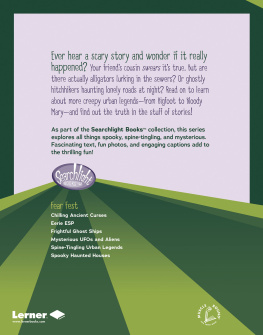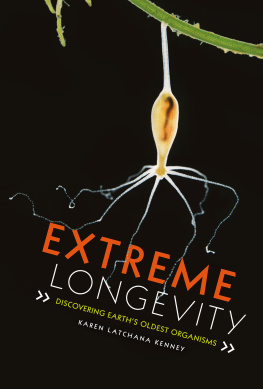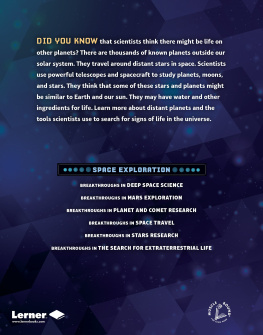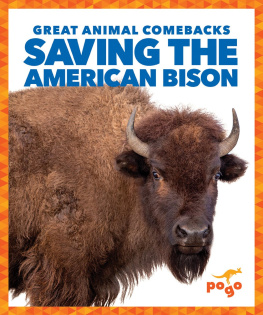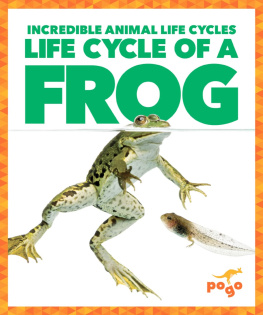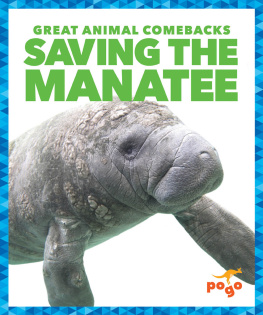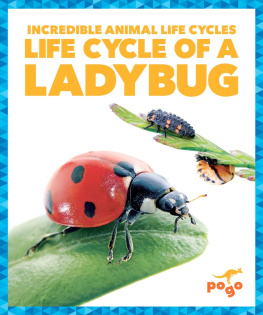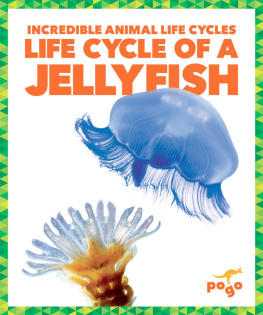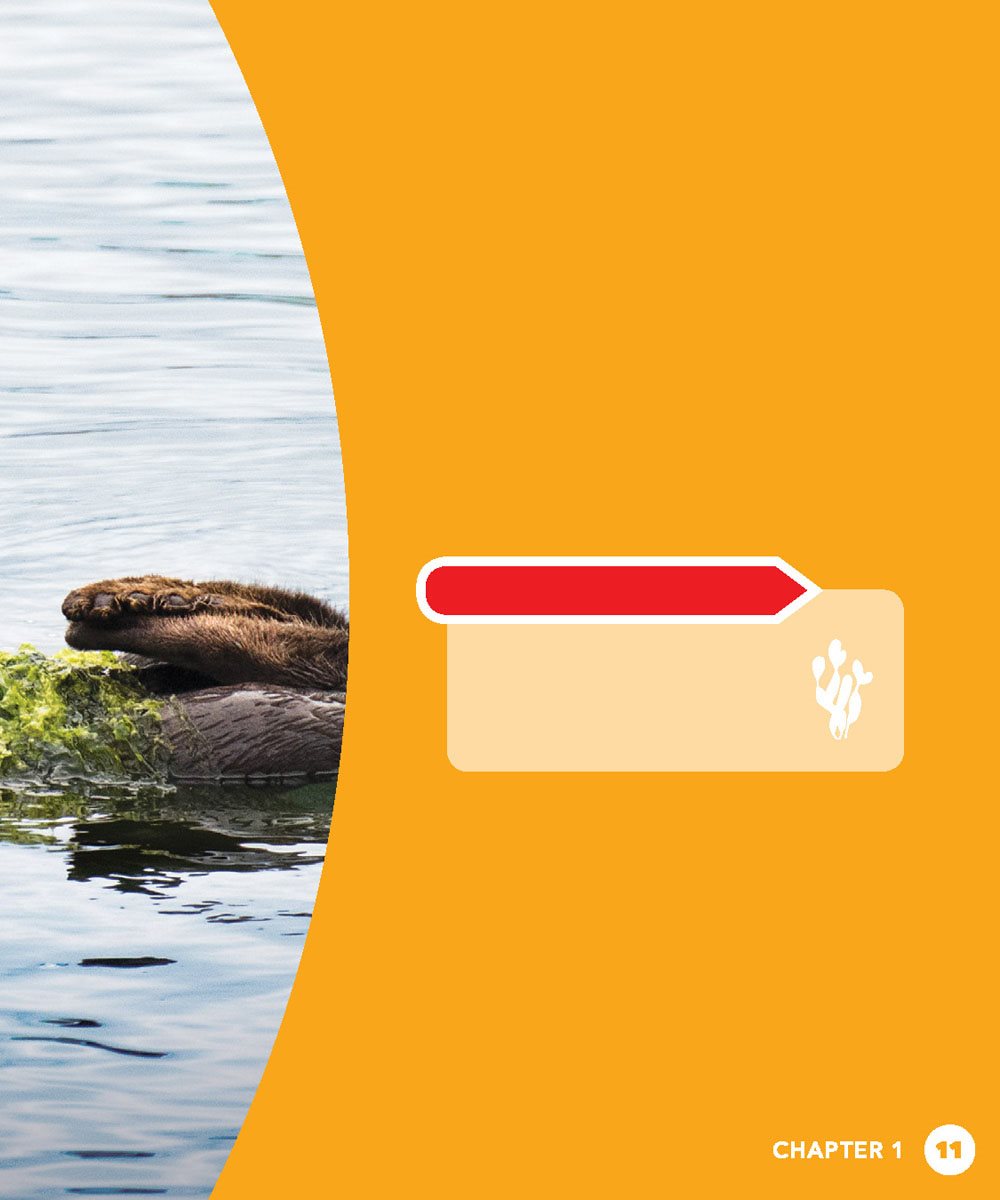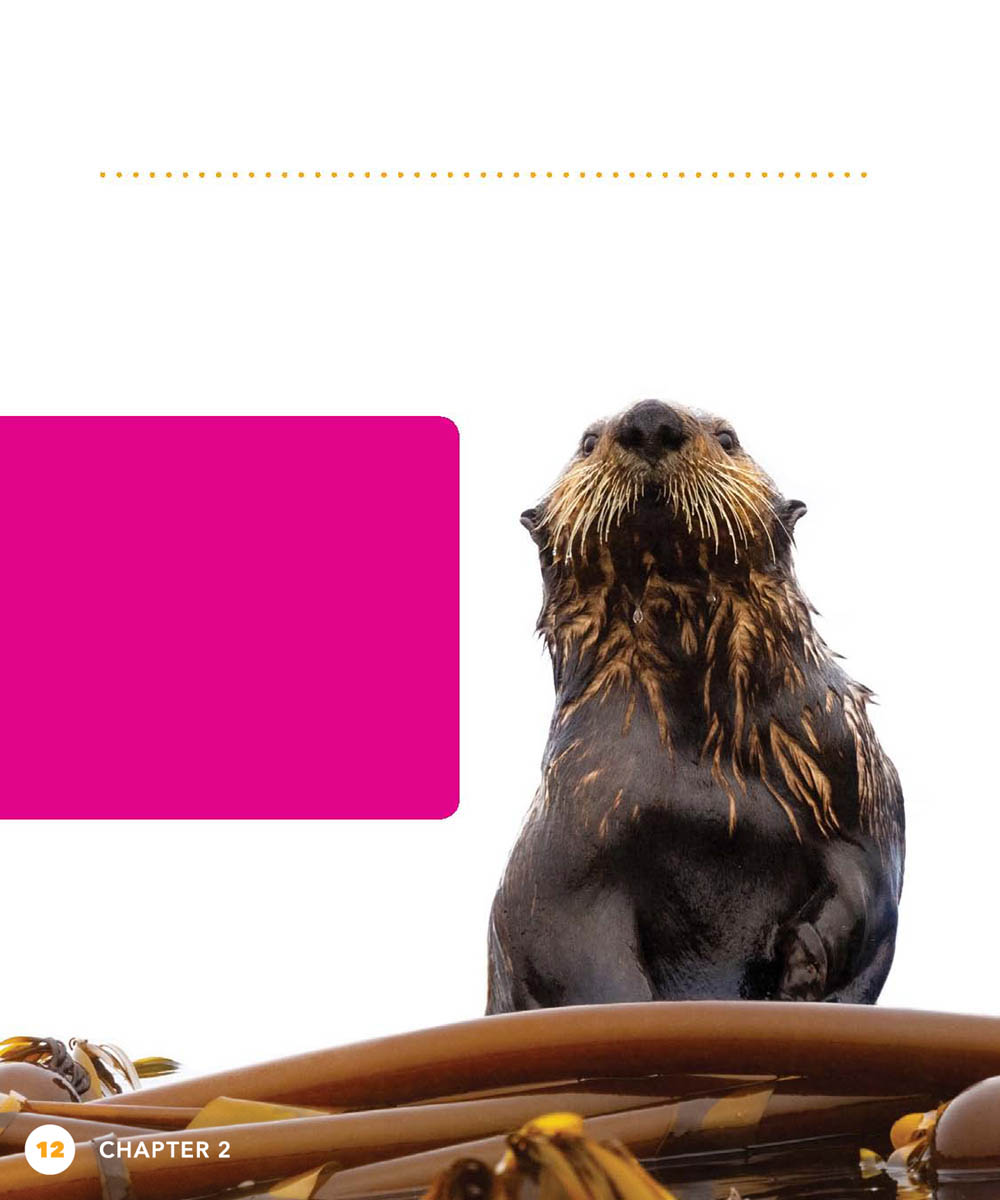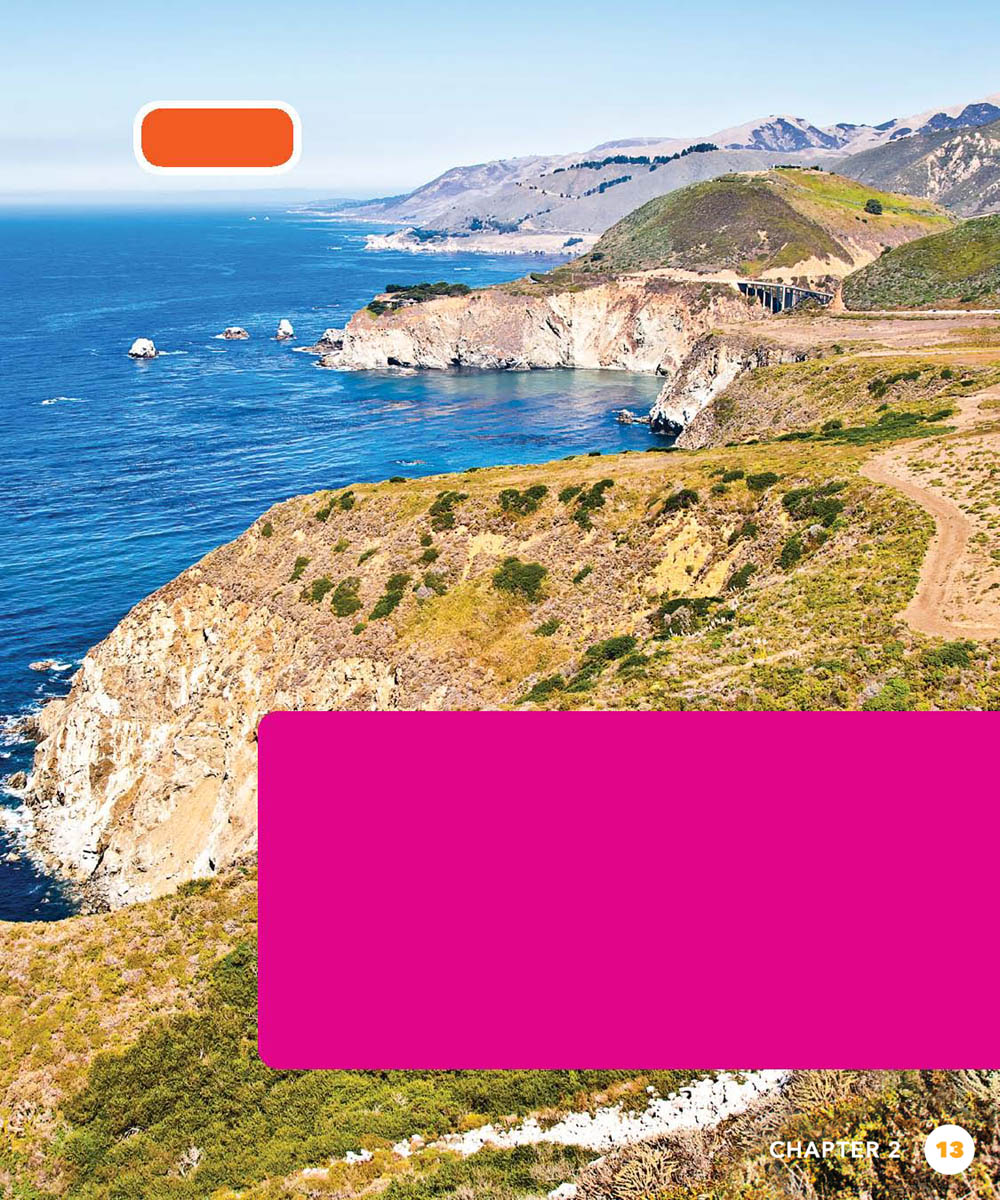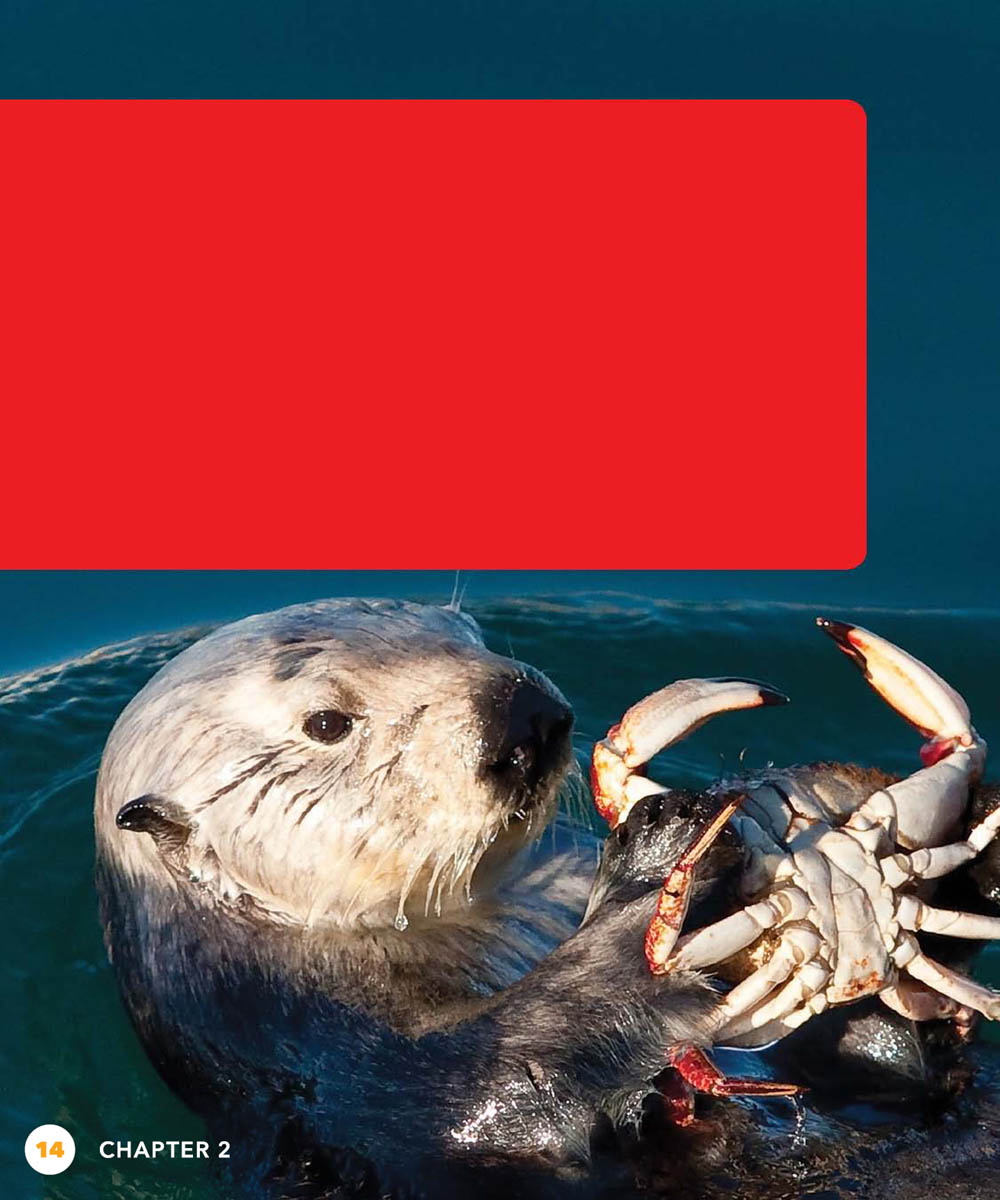Contents
Ideas for Parents
and Teachers Pogo Books let children practice
reading informational text while
introducing them to nonfiction
features such as headings, labels,
sidebars, maps, and diagrams,
as well as a table of contents,
glossary, and index. Carefully leveled text with
a strong photo match offers
early fluent readers the support
they need to succeed. Before Reading Walk through the book and
point out the various nonfiction
features. Ask the student what
purpose each feature serves. Look at the glossary together.
Read and discuss the words. Read the Book Have the child read the book
independently.
Invite him or her to list questions
that arise from reading. After Reading Discuss the childs questions.
Talk about how he or she might
find answers to those questions. Prompt the child to think more.
Ask: Sea otter populations were
harmed by an oil spill in 1989.
Can you think of other oil spills
that have harmed animals?
How do humans help? Pogo Books are published by Jump! 5357 Penn Avenue South Minneapolis, MN 55419 www.jumplibrary.com Copyright 2019 Jump! International copyright reserved in all countries. No part of this book may be reproduced in any form without written permission from the publisher. Library of Congress Cataloging-in-Publication Data Names: Kenney, Karen Latchana, author. Title: Saving the sea otter / by Karen Latchana Kenney.
Description: Pogo books edition. | Minneapolis, MN : Jump!, Inc., [2019] Series: Great animal comebacks Audience: Age 710. | Includes index. Identifiers: LCCN 2018037643 (print) LCCN 2018039053 (ebook) ISBN 9781641282918 (ebook) ISBN 9781641282901 (hardcover : alk. paper) Subjects: LCSH: Sea otterConservation Juvenile literature. Classification: LCC QL737.C25 (ebook) LCC QL737.C25 K397 2019 (print) DDC 599.769/5dc23 LC record available at https://lccn.loc.gov/2018037643 Editor: Jenna Trnka Designer: Anna Peterson Photo Credits: Michael Quinton/Minden Pictures/ SuperStock, cover; Dmytro Pylypenko/Shutterstock, 1; Menno Schaefer/Shutterstock, 3; Michael S.
Nolan/ Age Fotostock, 4; Minden Pictures/SuperStock, 5; Beth Savidge/Shutterstock, 67; Jeanninebryan/Dreamstime, 89; GomezDavid/iStock, 1011; KenCanning/iStock, 12; Dima_Rogozhin/Shutterstock, 13; Jean-Edouard Rozey/ 123rf, 1415; Bettmann/Getty, 1617; Suzi Eszterhas/ Minden Pictures/SuperStock, 18; kugelblitz/Getty, 19; imageBROKER/Alamy, 2021; Keneva Photography/ Shutterstock, 23. Printed in the United States of America at Corporate Graphics in North Mankato, Minnesota.
TABLE OF CONTENTS
CHAPTER HUNTING
SEA OTTERS A sea otter floats on its back
in Monterey Bay near California.
It eats a sea urchin. sea urchin
kelp It dives deep through . What is it
looking for? More urchins. Sea urchins
once took over this bay.
Why? Sea otters
almost went .
fur
People hunted sea otters for
food. And for their warm .
Sea otter fur is the thickest fur in
the world! Traders bought pelts
from the hunters. They sold pelts
in China. Why? They were in
fashion there. People made
winter clothes from them.
This lasted until
the mid- 1800s.
DID YOU KNOW? Sea otter fur has up to one
million hairs per square inch
(6.5 square centimeters)!
People only have around
100,000 hairs on their
whole head.
Before hunting, there were 100,000
to 300,000 sea otters. But in the
early 1900s, only small groups
were left. There were only a few
thousand left. DID YOU KNOW? Sea otters dont have
to keep them
warm. Instead, their thick
fur traps air bubbles.
This keeps water away from
their skin.
This is how they keep warm.
In the 1970s, an
studied sea otters. His name
was James Estes. He discovered
sea otters are a
. Without them,
kelp forests disappear.
Why? Sea urchins eat kelp.
When otters eat the urchins,
everything stays in balance. DID YOU KNOW? Sea otters use kelp as a tool.
They wrap it around their bodies
when they sleep.
This keeps
them from floating away!
CHAPTER HELPING
SEA OTTERS The first help for
sea otters came
in 1911. With what?
An international
fur seal treaty.
This law
sea otter hunting
around the world.
Big Sur People thought otters were gone
from California. But in 1913, close
to were spotted! Where? Big Sur.
It was an amazing discovery!
In 1941, the state protected the
area. It became the California
Sea Otter State Game .
In 1972, the Marine Protection
Act helped.
It said no one could hunt
or harm ocean mammals. The sea otter
was added to the
list in 1977. This helped animals at risk
of going extinct. Scientists made plans to help bring otters
back. They began counting otters every
year.
TAKE A LOOK! Sea otters came back to some places after the 1911 treaty.
But they never came back to Japan, Oregon, or Baja, California.
Only small groups live off Californias coast.
TAKE A LOOK! Sea otters came back to some places after the 1911 treaty.
But they never came back to Japan, Oregon, or Baja, California.
Only small groups live off Californias coast.
Most live by Alaska. RUSSIA NORTH


